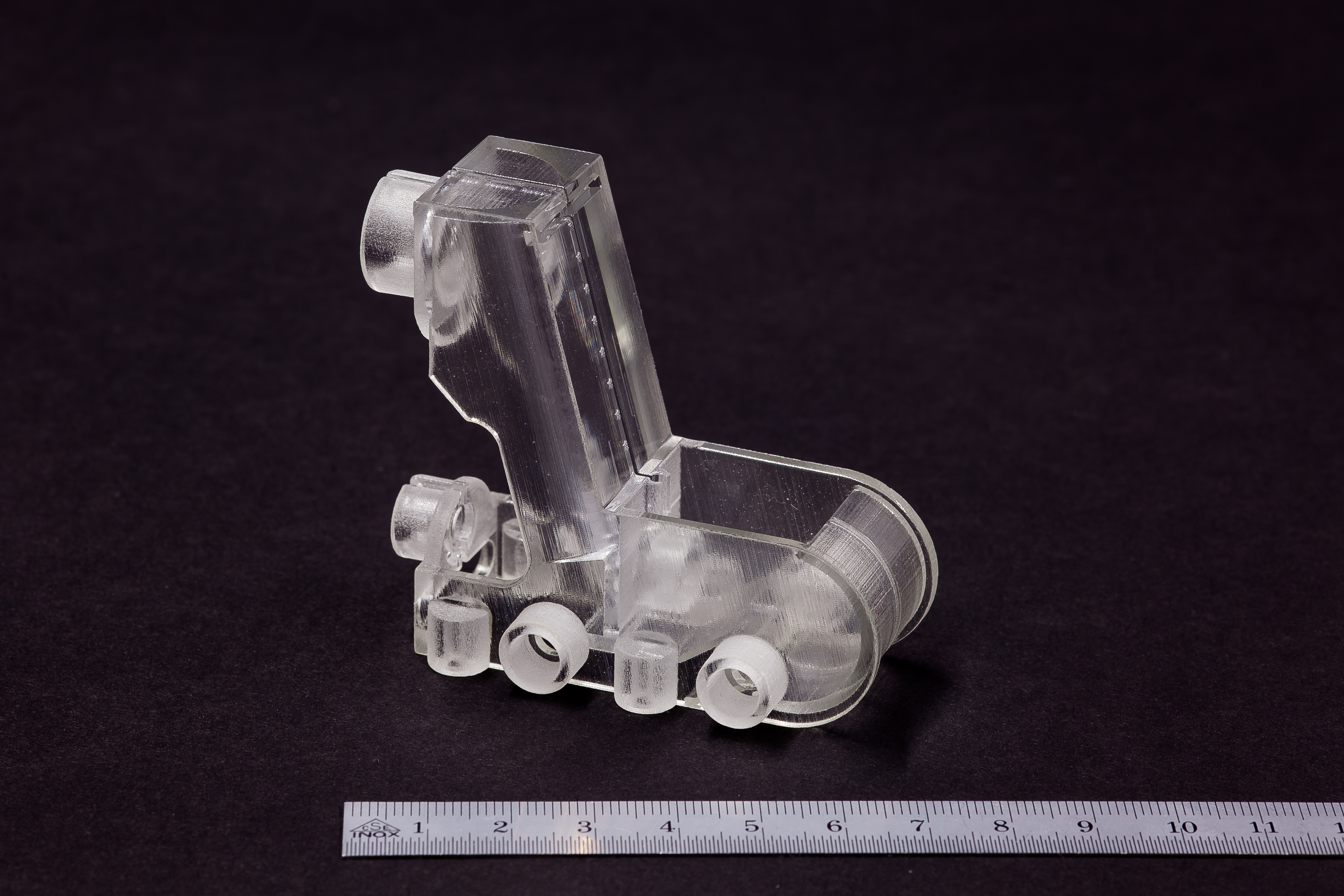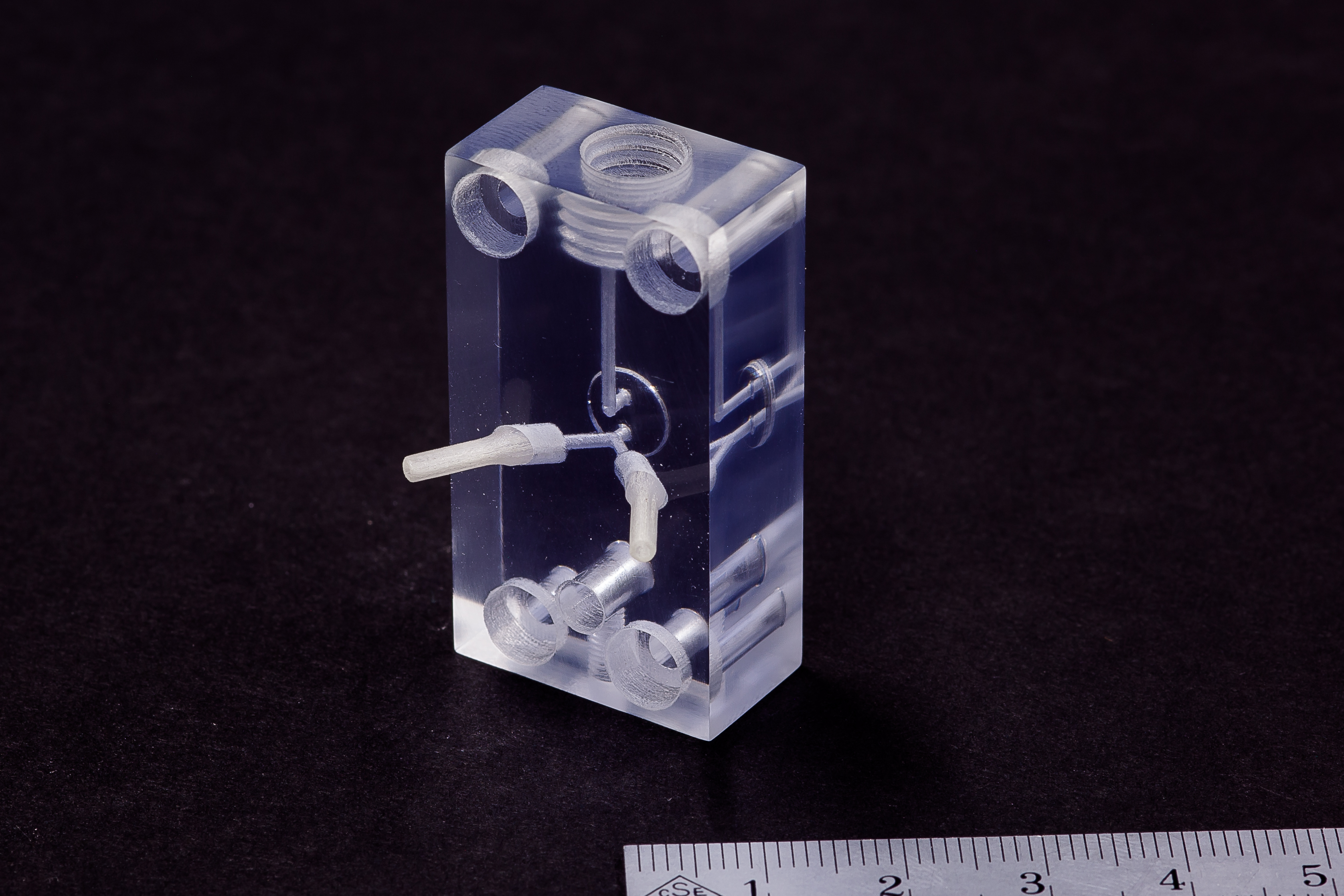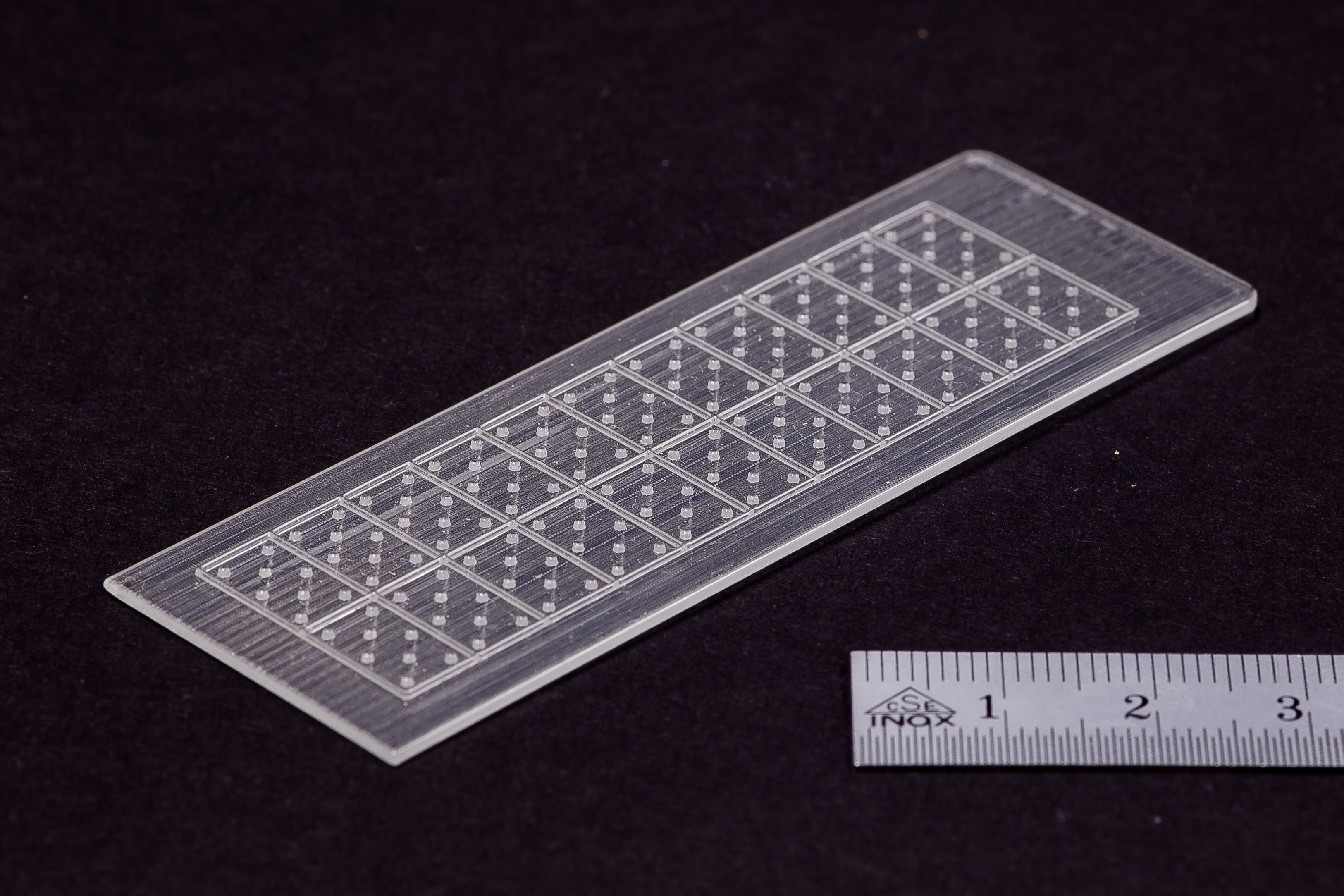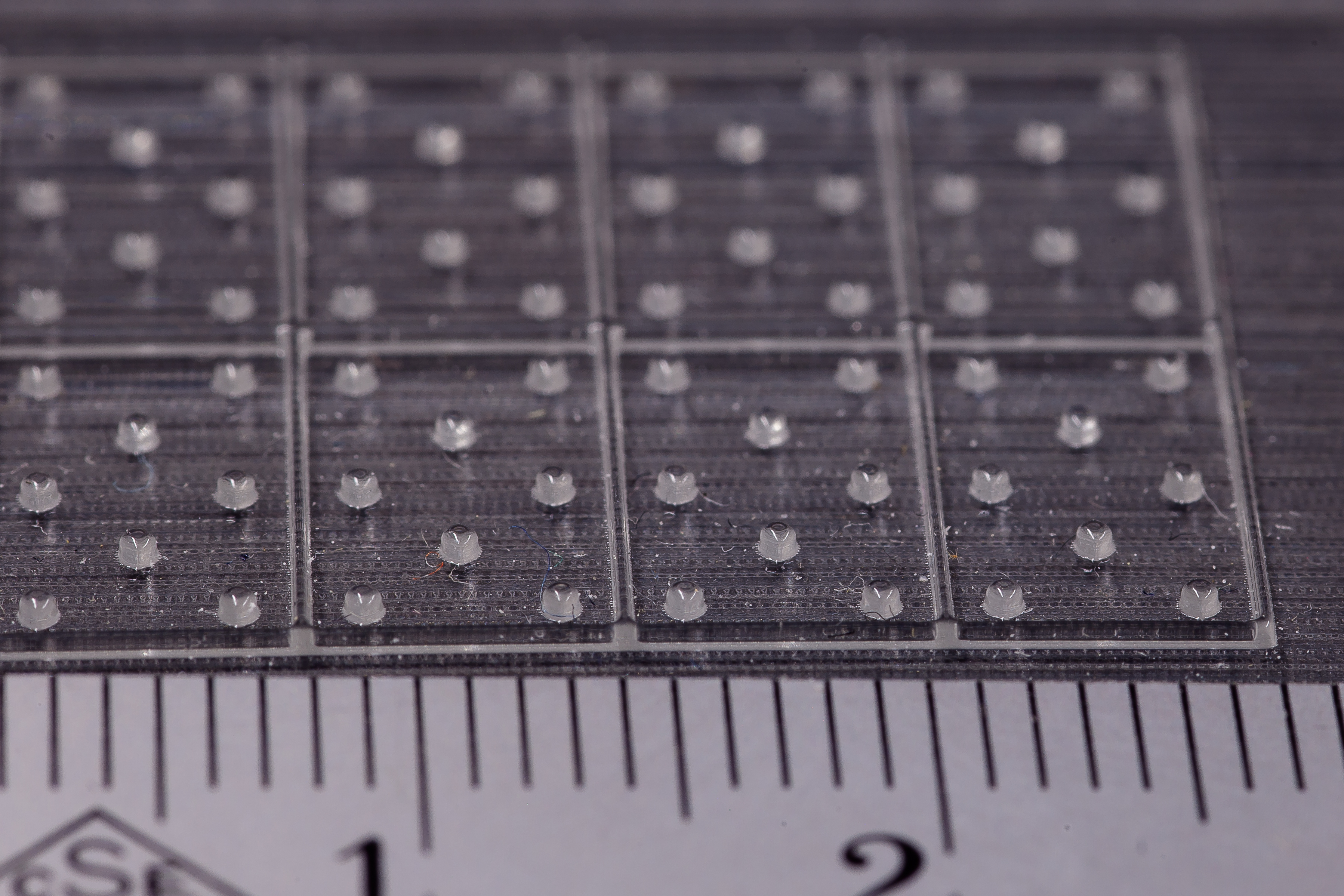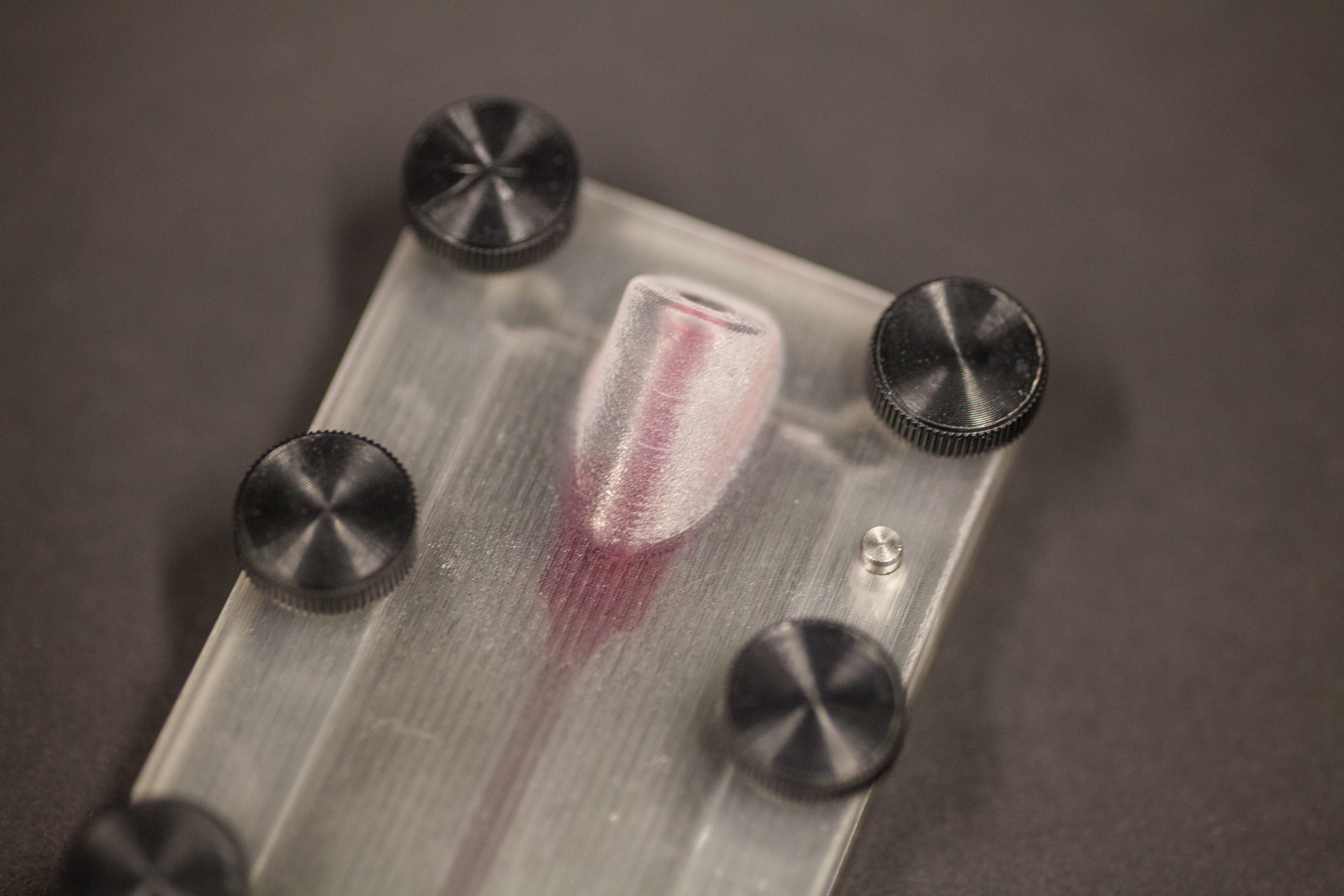PolyJet (PJ)
PolyJet is a AM technology known for its customizable material properties and excellent surface finish. It works by jetting UV curable resin onto a build tray in a process somewhat similar to inkjet printing. PolyJet offers one of the most advanced industrial AM solutions, producing parts with incredible precision and speed. It also supports a wide variety of build materials.
The two terms Multijet (MJM) and PolyJet (PJ) are used synonymously for the process of material jetting.
Functional Principle
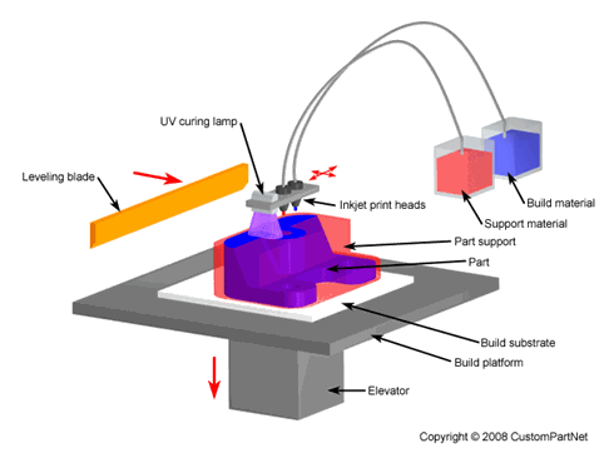
PolyJet printed parts are built by using photopolymer liquid resin. The polyjet places layers of photocurable resins onto a build tray in extremely fine layers. As the layers are placed, they are simultaneously cured via exposure to an ultraviolet (UV) light, solidifying them into solid material matching the programmed CAD file. This process repeats itself layer by layer until the entire part has been constructed. In the case of parts with complex geometries, support structures are added to the part to ensure a successful build and then manually removed during the finishing process.
Advantages / Disadvantages PolyJet
PolyJet is known for its customizable material properties and excellent surface finish, creating prototypes that are both detailed and smooth. PolyJet allows manufacturers to customize material properties, and supports various photopolymer options that can simulate a variety of different end-use materials.
A disadvantage is however that photopolymer jetting is working with UV-active photopolymers. Therefore, parts are not durable over time and have limited mechanical properties.
Ideal applications for PolyJet
- Visual models with fine details and smooth surfaces
- Prototypes for form-and-fit testing
- Accurate tooling patterns for plastic parts
- Parts with transparent requirements
Which material is available
VeroClear is a transparent photopolymer for clear acrylic simulation. It offers strength, stiffness, elongation and impact resistance, and the ability to blend with other materials for a range of opacities, hues and hardnesses. VeroClear enables visualization of internal components and features, and simulation of glass, ideal for form and fit testing of see-through parts. For best clarity it’s necessary to photo bleach, polish and/or lacquer parts.
More materials are available in cooperation with external manufacturers.
